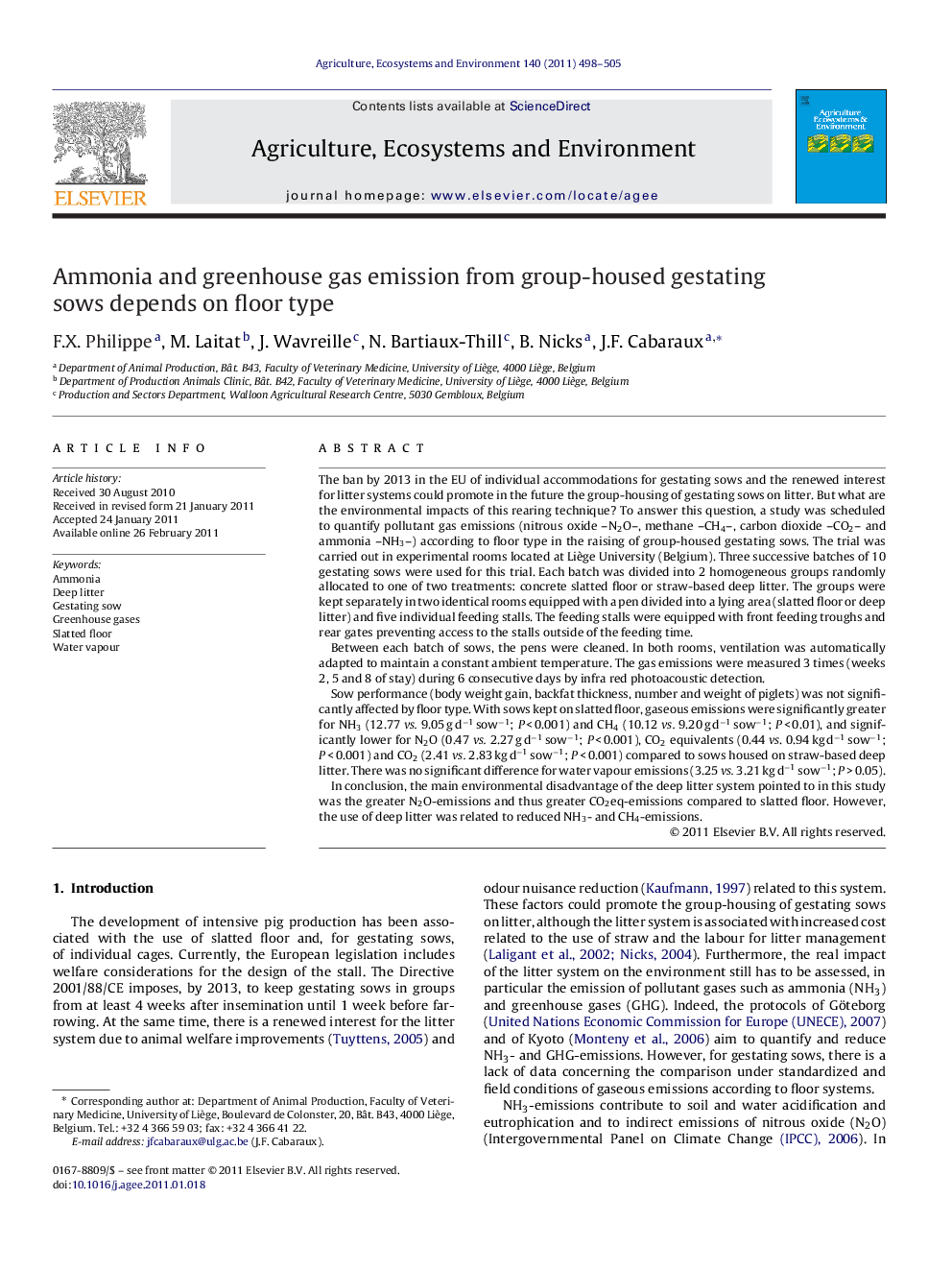| Article ID | Journal | Published Year | Pages | File Type |
|---|---|---|---|---|
| 2414739 | Agriculture, Ecosystems & Environment | 2011 | 8 Pages |
The ban by 2013 in the EU of individual accommodations for gestating sows and the renewed interest for litter systems could promote in the future the group-housing of gestating sows on litter. But what are the environmental impacts of this rearing technique? To answer this question, a study was scheduled to quantify pollutant gas emissions (nitrous oxide –N2O–, methane –CH4–, carbon dioxide –CO2– and ammonia –NH3–) according to floor type in the raising of group-housed gestating sows. The trial was carried out in experimental rooms located at Liège University (Belgium). Three successive batches of 10 gestating sows were used for this trial. Each batch was divided into 2 homogeneous groups randomly allocated to one of two treatments: concrete slatted floor or straw-based deep litter. The groups were kept separately in two identical rooms equipped with a pen divided into a lying area (slatted floor or deep litter) and five individual feeding stalls. The feeding stalls were equipped with front feeding troughs and rear gates preventing access to the stalls outside of the feeding time.Between each batch of sows, the pens were cleaned. In both rooms, ventilation was automatically adapted to maintain a constant ambient temperature. The gas emissions were measured 3 times (weeks 2, 5 and 8 of stay) during 6 consecutive days by infra red photoacoustic detection.Sow performance (body weight gain, backfat thickness, number and weight of piglets) was not significantly affected by floor type. With sows kept on slatted floor, gaseous emissions were significantly greater for NH3 (12.77 vs. 9.05 g d−1 sow−1; P < 0.001) and CH4 (10.12 vs. 9.20 g d−1 sow−1; P < 0.01), and significantly lower for N2O (0.47 vs. 2.27 g d−1 sow−1; P < 0.001), CO2 equivalents (0.44 vs. 0.94 kg d−1 sow−1; P < 0.001) and CO2 (2.41 vs. 2.83 kg d−1 sow−1; P < 0.001) compared to sows housed on straw-based deep litter. There was no significant difference for water vapour emissions (3.25 vs. 3.21 kg d−1 sow−1; P > 0.05).In conclusion, the main environmental disadvantage of the deep litter system pointed to in this study was the greater N2O-emissions and thus greater CO2eq-emissions compared to slatted floor. However, the use of deep litter was related to reduced NH3- and CH4-emissions.
Research highlights► Floor type does not influence animal performance. ► Deep litter increases N2O and decreases CH4 emissions. ► Deep litter has greater impact on global warming (greater CO2 equivalent emissions). ► Concrete slatted floor increases NH3 emissions.
